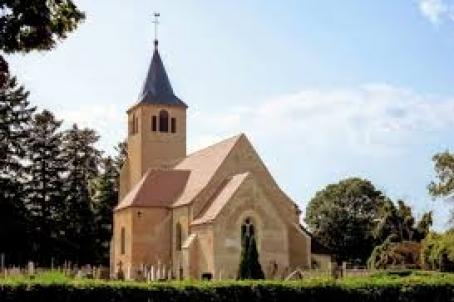Church of Saint-Christophe
The Saint Christopher church is dedicated to Saint Christopher, a martyr, who is the patron saint of travellers. It dominates the town of La Tour-du-Meix in the Jura. The original 12th century building was rebuilt in the 15th century by the abbot of St Claude. The church includes a bell tower and a Romanesque nave extended by a choir leaning against the rock at the top of the ridge. The bell tower contains one of the oldest Jura bells. This church shelters an imposing statue of Saint Christopher.
About this building
The Saint Christopher church is dedicated to martyr Saint Christopher, who is the patron saint of travelers. It dominates the town of La Tour-du-Meix in the Jura. The building, whose origins date back to the 12th century, was rebuilt in the 15th century by the Morel family, named after the abbot of Saint-Claude.
The church includes a bell tower and a Romanesque nave of 4 vaulted bays in a broken Gothic cradle, whose first span is occupied by a platform resting on two octagonal pillars and three arches vaults. The choir, of two flat chevet bays, is leaning against the top of the crest. It is covered by cross warheads with the arms of Pierre Morel. The bell tower contains one of the oldest Jura bells. It was baptized in 1529, under the name of Pierrette la Joyeuse and had as godfather Pierre de la Baume, abbot of Saint Claude. The lateral Marian chapel is of Flamboyant Gothic style.
The building, listed in the inventory of Historic Monuments in 1946, underwent many transformations over the centuries. In the eighteenth century, the shingles covering the choir gave way to tiles and the four covered sections of the bell tower were replaced by an octagonal frame steeple topped with glazed tiles.
The church houses an imposing statue of St. Christopher, patron of travelers, as well as many statues (from the fifteenth to the seventeenth century): the Virgin, St. Anne, St. Claude, St. Isidore and a Christ of Mercy. There is also a low relief depicting the adoration of the shepherds (16th century) and the Magi (17th century), an altarpiece, a ceramics cross, paintings, paneling and stalls and tombstones from the 16th century.





